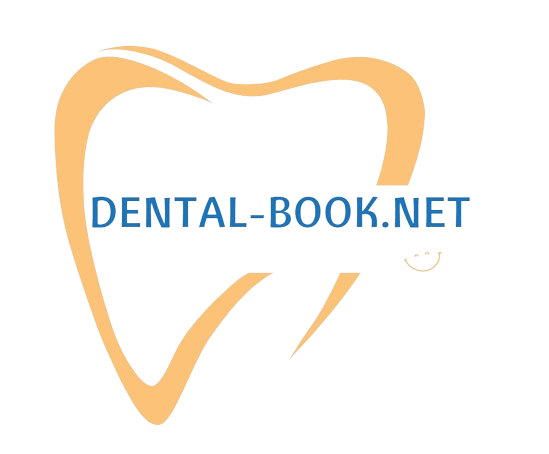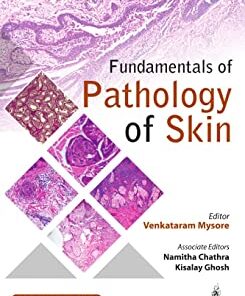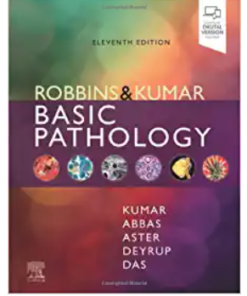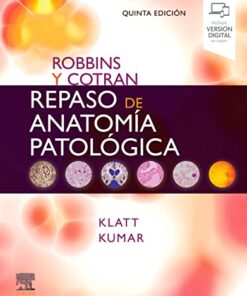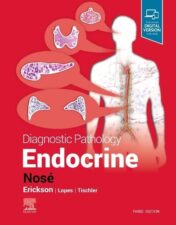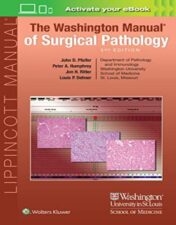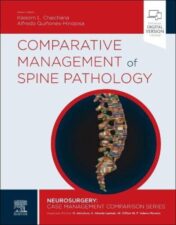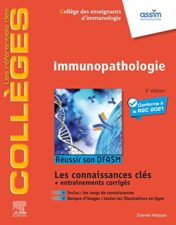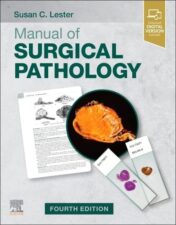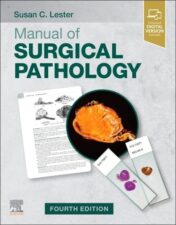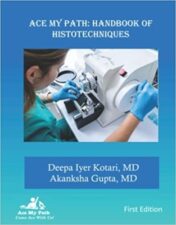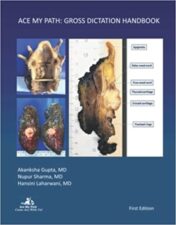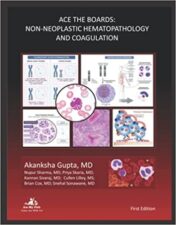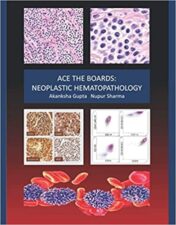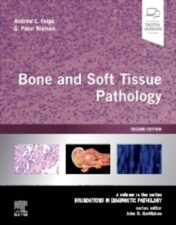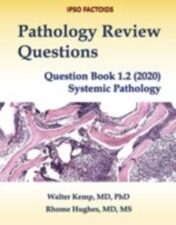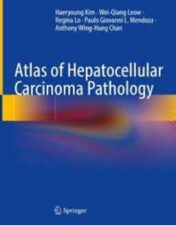Discover the Best Pathology Books to Advance Your Knowledge
Discover the Best Pathology Books Now!
Are you looking for the best pathology books to help you understand and learn more about this field? Look no further! At DentalBooks.net, we have a wide selection of pathology books that are perfect for medical students, professionals, and anyone else interested in learning more about this fascinating subject. Our books cover topics such as anatomy, physiology, pathology, and more. With our easy-to-use website, you can quickly find the perfect book for your needs. Plus, we offer free shipping on all orders over $50. So don’t wait any longer – explore our selection of pathology books today and start learning more about this important field! Visit DentalBooks.net now!
Basic Sciences Books
Fundamentals of Pathology of Skin, 5th Edition (Original PDF from Publisher)
Basic Sciences Books
Lever’s Dermatopathology: Histopathology of the Skin, 12th Edition (EPUB3)
Basic Sciences Books
Robbins & Kumar Basic Pathology, 11th edition (Original PDF from Publisher)
Basic Sciences Books
Basic Sciences Books
Pathology Books
Diagnostic Pathology: Endocrine, 3rd edition 2022 Original PDF
Pathology Books
Surgical Pathology of the GI Tract, Liver, Biliary Tract and Pancreas, 4th Edition 2022 Original PDF
Pathology Books
Pathology Books
Pathology Books
Comprehensive Multiple-Choice Questions in Pathology: A Study Guide 2022 Original PDF
Pathology Books
Immunopathologie: Réussir son DFASM – Connaissances clés, 3rd edition 2022 Original PDF
Pathology Books
Les vaccins en un coup d’oeil: Vaccins et pathologies à prévention vaccinale 2022 Original PDF
Pathology Books
Pathology Books
Pathology Books
Ace the Boards: Neoplastic Hematopathology (Ace My Path) 2020 Original PDF (No Bookmark)
Pathology Books
Pathology Books
Pathology Review Questions: Question Book 1.2 (2020) Systemic Pathology 2020 Original pdf
Pathology Books
Atlas of Hepatocellular Carcinoma Pathology 2022 Original pdf
Pathology Books
Pathology Books
Introduction
Are you looking to advance your knowledge in pathology? Look no further! Discover the Best Pathology Books to Advance Your Knowledge is here to help. This comprehensive guide provides an overview of the best pathology books available, helping you find the perfect book to suit your needs. Whether you're a student, medical professional, or just curious about the field, this guide will provide you with the information you need to make an informed decision. With detailed reviews and ratings, you can be sure to find the perfect book to help you learn more about pathology.
Overview of Pathology: A Comprehensive Guide to the Basics
Pathology: A Comprehensive Guide to the Basics is an essential resource for anyone interested in learning about the fundamentals of pathology. This comprehensive guide provides a thorough overview of the field, covering topics such as the structure and function of cells, the causes and effects of disease, and the diagnosis and treatment of various diseases.
The book begins with an introduction to the basics of pathology, including an overview of the different types of cells and tissues that make up the human body. It then moves on to discuss the causes and effects of disease, including genetic and environmental factors. The book also covers the diagnosis and treatment of various diseases, including cancer, infectious diseases, and autoimmune disorders. Additionally, it provides information on laboratory tests used to diagnose and monitor diseases, as well as the use of imaging techniques to detect and diagnose diseases.
In addition to providing an overview of the basics of pathology, this book also includes detailed information on specific diseases and conditions. For example, it covers the diagnosis and treatment of cancer, including the use of chemotherapy and radiation therapy. It also discusses the diagnosis and treatment of infectious diseases, such as HIV/AIDS, tuberculosis, and malaria. Additionally, it covers the diagnosis and treatment of autoimmune disorders, such as lupus and rheumatoid arthritis.
Overall, Pathology: A Comprehensive Guide to the Basics is an invaluable resource for anyone interested in learning more about the fundamentals of pathology. It provides a comprehensive overview of the field, covering topics such as the structure and function of cells, the causes and effects of disease, and the diagnosis and treatment of various diseases. Additionally, it includes detailed information on specific diseases and conditions, making it an essential resource for medical professionals and students alike.
Understanding Pathology Through Clinical Cases
Understanding Pathology Through Clinical Cases is a comprehensive guide to the diagnosis and management of diseases. It provides an in-depth look at the various aspects of pathology, including anatomy, physiology, biochemistry, genetics, immunology, microbiology, and pharmacology. The book also covers the clinical presentation of diseases, their diagnosis, and treatment options.
The book begins with an introduction to pathology and its importance in medical practice. It then moves on to discuss the different types of pathology, such as anatomical, physiological, biochemical, genetic, immunological, and microbiological. Each type of pathology is discussed in detail, including its causes, symptoms, diagnosis, and treatment.
The book also covers the principles of laboratory testing and how to interpret results. It explains the use of imaging techniques, such as X-rays, CT scans, and MRI, and how they can be used to diagnose diseases. Additionally, it discusses the role of pathology in the diagnosis and management of cancer, infectious diseases, and other conditions.
The book also includes case studies that illustrate the application of pathology in clinical practice. These cases provide real-world examples of how pathology can be used to diagnose and treat diseases. The book also includes a section on ethical considerations in pathology, which covers topics such as informed consent, confidentiality, and patient rights.
Overall, Understanding Pathology Through Clinical Cases is an invaluable resource for medical students, physicians, and other healthcare professionals. It provides a comprehensive overview of pathology and its applications in clinical practice. The book is well-written and easy to understand, making it an ideal reference for anyone interested in learning more about pathology.
Exploring Pathology Through Histology and Microscopy
Exploring Pathology Through Histology and Microscopy is an invaluable tool for medical professionals. It provides a comprehensive overview of the microscopic anatomy of cells, tissues, and organs, as well as the pathological processes that can affect them. This knowledge is essential for diagnosing and treating diseases, as well as understanding the underlying mechanisms of disease.
Histology is the study of the microscopic structure of tissues and organs. It involves examining tissue samples under a microscope to identify the various cell types, their arrangement, and the presence of any abnormal features. Histology is used to diagnose diseases, such as cancer, and to monitor the progress of treatments.
Microscopy is the use of a microscope to examine objects too small to be seen with the naked eye. It is used to observe the structure of cells, tissues, and organs, as well as to detect the presence of pathogens or other abnormalities. Microscopy is also used to identify the cause of a disease, such as bacteria or viruses, and to monitor the effectiveness of treatments.
Exploring Pathology Through Histology and Microscopy provides a comprehensive overview of the microscopic anatomy of cells, tissues, and organs, as well as the pathological processes that can affect them. It covers topics such as the structure and function of cells, the role of inflammation in disease, and the diagnosis and treatment of various diseases. The book also includes detailed illustrations and photographs to help readers better understand the material.
Exploring Pathology Through Histology and Microscopy is an invaluable resource for medical professionals. It provides a comprehensive overview of the microscopic anatomy of cells, tissues, and organs, as well as the pathological processes that can affect them. This knowledge is essential for diagnosing and treating diseases, as well as understanding the underlying mechanisms of disease.
Advancing Your Knowledge of Pathology Through Research
Advancing your knowledge of pathology through research is an important part of becoming a successful pathologist. Pathology is the study of disease and its causes, effects, and treatments. It is a complex field that requires a deep understanding of the body’s systems and how they interact with each other. Research is essential to gaining this understanding and staying up-to-date on the latest developments in the field.
Research can be conducted in a variety of ways. One way is to read and analyze existing studies and literature related to pathology. This can help you gain a better understanding of the current state of the field and identify areas where further research is needed. You can also attend conferences and seminars to learn from experts in the field and network with other professionals.
Another way to advance your knowledge of pathology through research is to conduct your own studies. This could involve collecting data from patients or conducting experiments in a laboratory setting. You may also want to collaborate with other researchers to develop new methods for diagnosing and treating diseases.
Finally, you can use technology to advance your knowledge of pathology. For example, you can use computer programs to analyze large datasets and identify patterns in the data. You can also use artificial intelligence to develop algorithms that can detect diseases more accurately than traditional methods.
No matter which method you choose, it is important to stay up-to-date on the latest developments in the field. This will ensure that you are able to provide the best care possible to your patients. Research is an essential part of advancing your knowledge of pathology and staying ahead of the curve.
Utilizing Pathology Books to Enhance Diagnostic Skills
Pathology books are an invaluable resource for medical professionals looking to enhance their diagnostic skills. Pathology is the study of the causes and effects of diseases, and pathology books provide a comprehensive overview of the various diseases that can affect humans. By reading these books, medical professionals can gain a better understanding of the underlying mechanisms of disease, as well as the signs and symptoms associated with each condition. This knowledge can then be used to make more accurate diagnoses and provide better patient care.
Pathology books cover a wide range of topics, from basic anatomy and physiology to more complex topics such as immunology and genetics. They also provide detailed information on the diagnosis and treatment of various diseases. For example, some books may include information on how to interpret laboratory results, while others may provide guidance on how to diagnose and treat specific conditions. Additionally, many pathology books contain case studies that illustrate how certain diseases can present in different patients.
In addition to providing a wealth of information on diseases, pathology books can also help medical professionals hone their diagnostic skills. By studying the various signs and symptoms associated with a particular condition, medical professionals can learn to recognize patterns and develop a better understanding of how to diagnose and treat a given condition. Furthermore, by reading case studies, medical professionals can gain insight into how to approach a particular patient’s situation and determine the best course of action.
Finally, pathology books can also serve as a valuable reference tool for medical professionals. By having access to a comprehensive source of information on diseases, medical professionals can quickly look up information on a particular condition or symptom. This can be especially helpful when dealing with rare or complex cases, as it can provide medical professionals with the necessary information to make an accurate diagnosis.
Overall, pathology books are an essential resource for medical professionals looking to enhance their diagnostic skills. By reading these books, medical professionals can gain a better understanding of the underlying mechanisms of disease, as well as the signs and symptoms associated with each condition. Additionally, they can use the information contained within these books to hone their diagnostic skills and develop a better understanding of how to approach a particular patient’s situation. Finally, pathology books can also serve as a valuable reference tool, allowing medical professionals to quickly look up information on a particular condition or symptom.
Conclusion
Pathology books are an invaluable resource for medical professionals and students alike. They provide a comprehensive overview of the field, from basic concepts to advanced topics. With so many options available, it can be difficult to know which books are best suited to your needs. We hope this guide has helped you discover the best pathology books to advance your knowledge. Whether you’re looking for a comprehensive textbook or a specialized reference book, there is something out there for everyone. Investing in quality pathology books is a great way to stay up-to-date on the latest developments in the field and ensure that you have the necessary skills to succeed.
